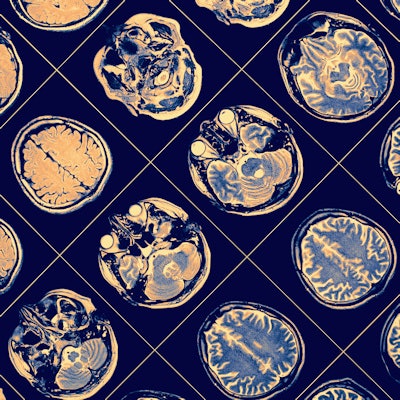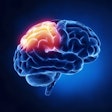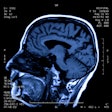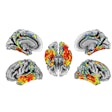
Researchers with the U.S. National Institutes of Health (NIH) have defined the pathology of a common dementia disorder that mimics Alzheimer's disease in an article published in Brain on April 30. They believe the condition warrants the inclusion of immunohistochemistry testing as part of the neuropathological evaluation of older adults.
Called limbic-predominant age-related TDP-43 encephalopathy (LATE), the condition is characterized by misfolded TDP-43, a protein involved in the regulation of gene expression in the brain, and is associated with a decline in cognitive function.
Based on large autopsy and magnetic resonance imaging (MRI) studies, the researchers described the condition and provided detailed guidance about LATE, including the diagnosis and staging of neuropathological change. About 20% of people older than 80 years have pathological features consistent with the condition, they noted.
The Brain article presents a staging system for autopsy diagnosis and characterization of the distribution of TDP-43 proteinopathy. In the first stage of LATE-neuropathological change (LATE-NC), the condition is present only in the amygdala. In the second stage, it also appears in the hippocampus, and in the third stage, it is detected in the middle frontal gyrus.
"It is recommended that TDP-43 immunohistochemistry be performed as part of the neuropathological evaluation in all older subjects," advised first author and University of Kentucky pathologist Dr. Peter Nelson, PhD, and colleagues in the Brain paper.
"At a minimum, immunohistochemical staining for TDP-43 is recommended in three brain areas: amygdala, mid-level hippocampus, and middle frontal gyrus," they wrote. "We recommend evaluating these regions as they are commonly obtained at autopsy of aged subjects and capture presumed progression of LATE-NC in the brain."
Need for new nomenclature
The paper reflects discussions held at a workshop organized in October 2018 by the U.S. National Institute on Aging, which is part of the NIH. Specialists in the field felt there was a need for new nomenclature about the pathological features associated with dementia in recognition of the complexity of the brains of older people.
"LATE is associated with substantial disease-specific cognitive impairment, usually an amnestic dementia syndrome ('dementia of the Alzheimer's type')," Nelson and colleagues wrote.
Nelson et al noted that "multiple comorbid pathologies are the norm, and there is substantial inter-individual variation in neuropathological phenotypes."
"The overall public health impact of LATE is on the same order of magnitude as Alzheimer's disease neuropathological changes; the diseases are often comorbid, but which pathology is more severe varies greatly between individuals," they wrote.
Some characteristics of LATE-NC are similar to TDP-43-positive frontotemporal lobar degeneration (FTLD-TDP), yet the condition doesn't fit cleanly into this subtype, they advised.
There is a strong association between severe Alzheimer's disease neuropathological changes (ADNC) and cognitive impairment across age groups; however, people who die after the age of 80 experience a degree of cognitive decline that exceeds expectations based on the severity of their disease, the researchers noted.
"TDP-43 proteinopathy, hippocampal sclerosis pathology, and the associated amnestic dementia increases with advanced age, while the prevalence of severe ADNC decreases in extreme old age," they wrote.
"The presence of pathological TDP-43 in these cases suggests a novel disease mechanism in older adults. As there is currently no universally agreed upon terminology or staging system for common age-related TDP-43 proteinopathy, this condition is under-studied and not well recognized even among investigators in the field of dementia research," they added.
Implications for Alzheimer's disease trials
The definition of a new dementia disorder comes at a grim time for Alzheimer's disease research. The field has been preoccupied with the hypothesis that disease can be addressed by targeting the buildup of beta-amyloid plaque in the brain, but numerous drugs intended to reduce this buildup have failed over the years. Most recently, Biogen Idec and partner Eisai terminated two late-stage studies of their antiamyloid monoclonal antibody aducanumab in March.
Nelson and colleagues called for additional research into LATE, noting that there is some overlap of genetic risk factors for LATE and frontotemporal dementia and Alzheimer's disease.
"Formalization of LATE diagnostic criteria and increased awareness of this disease should help guide the design and interpretation of Alzheimer's disease clinical trials," they advised.
No molecule-specific biomarker has been identified for LATE, and more studies are needed about the clinical and pathological progression of the disease. The guidelines on the pathological staging of LATE just published in Brain are preliminary and will need to be updated over time.
Nelson et al wrote that while a biomarker has not yet been identified, genetic studies have provided insights about the nature of the disease. They noted that five genes have risk alleles associated with LATE-NC:
- Granulin (GRN) on chromosome 17q
- Transmembrane protein 106B (TMEM106B) on chromosome 7p
- ATP-binding cassette subfamily member 9 (ABCC9) on chromosome 12p
- Potassium channel subfamily M regulatory beta subunit 2 (KCNMB2) on chromosome 3q
- Apolipoprotein E (APOE) on chromosome 19q
"Optimal biomarkers for LATE, including biofluids or PET ligands, would be specific for the disease-defining feature, namely TDP-43 proteinopathy," but these do not appear to be on the near-term horizon, Nelson and colleagues wrote.
Clinical trials in Alzheimer's disease need to be powered to account for TDP-43 proteinopathy and "development of specific LATE biomarkers(s) should be a high scientific priority," they wrote.
Clinical trials directed at preventing or treating LATE, on its own or with other brain diseases, "should be a major direction for future research," they concluded.



















